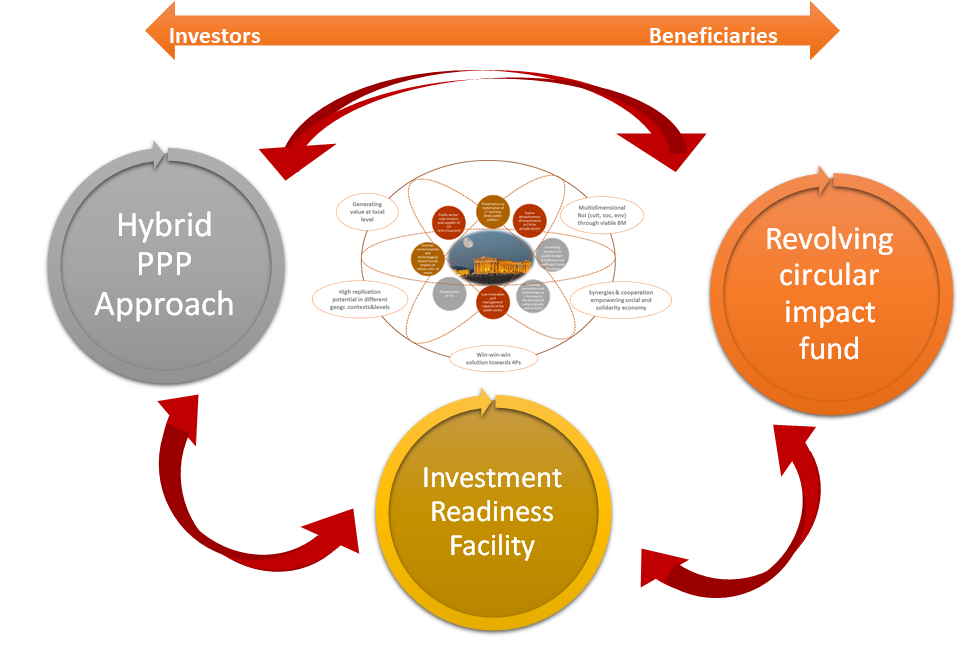
01Aug
CLIC circular financing instruments: leveraging investments in cultural heritage adaptive reuse
INIZIATIVA, partner of CLIC project, has developed a proposal of three circular financing mechanisms, i.e. Hybrid Public-Private-Partnership Approach, Revolving Circular Impact Fund and Investment Readiness Facility, which will be presented in the deliverable 4.2 expected at the end of September 2021.
INIZIATIVA as partner of CLIC project, has contributed to the deliverable 4.2 with the proposal of three circular financing mechanisms.
The first mechanism regards the development of a hybrid approach to Public-Private Partnership by including intentional impact measurement logics and the Fourth “P” that stands for People dimension. The final aim of this hybrid approach is ensuring the creation of cultural shared value: i.e. economic value meets social well-being in the adaptive reuse of cultural heritage field. The Fourth “P”, in symmetry with the CLIC “human-centred” approach, takes into consideration citizen empowerment and involvement in co-design and co-creation of solutions for better inclusion and social integration.
The second circular financial mechanism is represented by the design of a Revolving Circular Impact Fund model with features such as a revolving approach, impact measurement based on each single ARCH initiative and under the portfolio perspective, boosting complimentary instrument bundling and provision not only of equity/debt financing instruments, but also in-kind contributions (e.g. laboratories, work for equity, services, infrastructure, facilities etc.).
The third mechanism is represented by an Investment Readiness Facility, derived from the concepts behind the financial instruments used by the European Commission and the European Investment Bank to foster the energy efficiency market. Indeed, a frequent financing gap experienced by ARCH initiatives, is that they are not investment ready projects. In order to resolve this financing and investment readiness gap, a dedicated facility, potentially financed through public grants can be used. This instrument may enhance the investment maturity of ARCH initiatives and mobilize private investments.
The proposal of circular financing mechanisms can be used individually or in synergy for funding ARCH initiatives. However, the truly important Stage is understanding the possible mutual benefits and synergies of implementing identified financing, risk mitigation and capacity building strategies. This can only be achieved with the insight, knowledge and experience of stakeholders (the 4th P) working to secure a positive future for heritage sites and the local communities that can benefit from regenerating cultural heritage assets.
